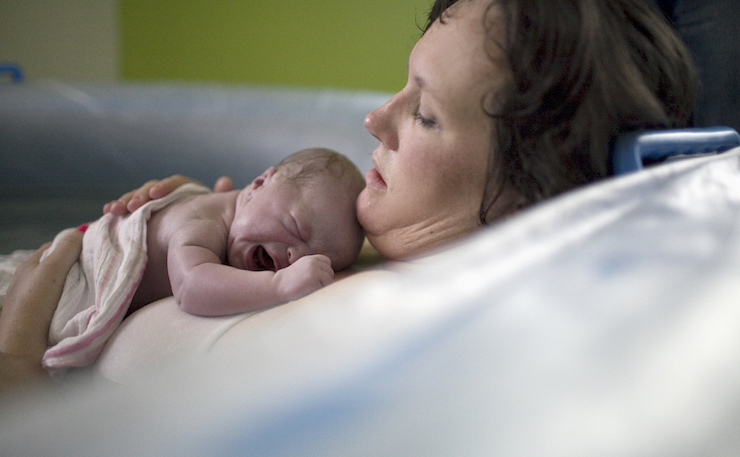Behind the sensationalist headlines, a slow march of restrictions has limited the autonomy of women who choose to give birth in their own homes. With the medical establishment set against the practice, women have been driven underground, writes Dr Petra Bueskens.
On March 24 Coroner Peter White recommended the Director of Public Prosecutions examine whether criminal charges should be laid against Gaye Demanuele following the tragic death of Caroline Lovell after she gave birth to her second child at home with Gaye and another midwife. Gaye has maintained all along that she followed procedure. She has stated that, with hindsight, she wished she had have called the ambulance sooner, but that she did so as soon it became evident Ms Lovell required emergency care.
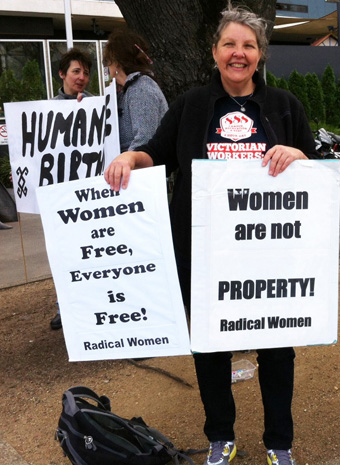
From the various caricatures in the news media, one would assume that Gaye was a villain, wilfully obstructing the care of a dying woman – allowing her to “bleed out” deliberately. One would assume that she is a rabid ideologue with little capacity to differentiate her (left, feminist) politics from her midwifery practice. With terms as sensational and damning as “serial killer“, we know we are in the hate filled territory of a witch hunt, with all the historical resonances of that term.
Anecdote is not evidence, but let me say this to counter the hyperbole: this is not the Gaye I know who cared for me at home during a post-partum bleed with great skill and empathy. This is not the Gaye whom I called and asked for advice about my third pregnancy and who gave me an hour of her time to listen and offer different possibilities (including giving birth in a hospital); nor the Gaye I protested with in support of women’s birth rights; nor the Gaye who has served a large community of Melbourne women who have decided to birth at home despite an institutionalised culture of opposition and hostility.
This article is not about assessing the facts of the case, however, which has been referred to the Director of Public Prosecutions, nor is it about Gaye Demanuele as a person who is loved and respected by many; rather, it is an examination of the wider context of homebirth politics – specifically, the deliberate destruction of independent midwifery in Australia over the last decade and a half.
This is the political context against which Gaye’s case needs to be understood. It is a context that is almost never mentioned in the sensationalist and thoroughly biased reporting. Nor is it mentioned when that bias piggy backs onto a tragedy – the death of a mother or a baby – and exploits that tragedy for the ends of terminating birth rights. That is women’s inalienable right to choose where, how and with whom they give birth.
The End Of Insurance For Homebirth
Homebirth began its descent in Australia with the 2001 collapse of HIH insurance. While no claims had been made against independent midwives, insurers concluded that the number of midwives seeking insurance was so small that even one claim would make it commercially unviable and therefore no replacement product was offered.
Importantly, while the government underwrote the insurance for other medical professions with the collapse of HIH, midwives were not given a cent – a reflection, one could argue, of the state’s respect for the profession and for women’s birthing choices. As former director of Homebirth Australia Justine Caines wrote in 2010, “The most obvious outcome of the refusal by both the federal and state governments to assist with midwives’ indemnity insurance has been a great reduction in the numbers of privately practicing midwives.”
A much smaller pool of independent midwives continued perilously on in private practice. This group, by definition, had to be especially committed to the principles of independent midwifery and to the pregnant and birthing women they served. As Professor of Midwifery, Hannah Dahlen put it, if anything goes wrong “there is no recourse for negligence and the midwife can face financial ruin.”
Technically Legal
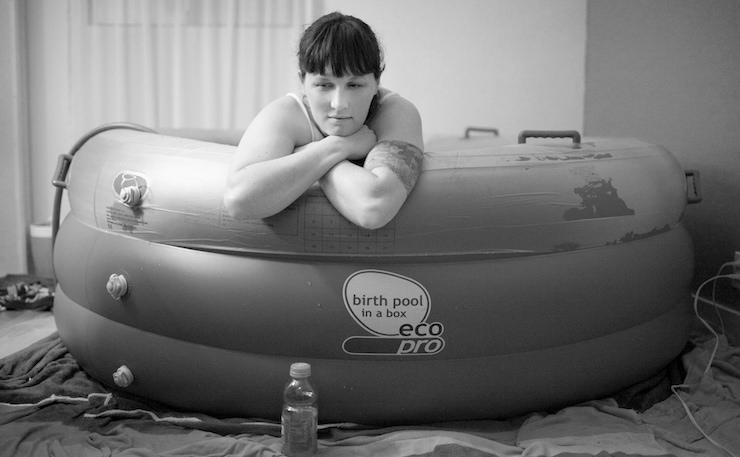
The second big watershed moment for the reduction of access to homebirth was in 2009 when key legislative change, masquerading as reform, changed the registration and regulation process for midwives. New provisions contained in the Health Legislation Amendment (Midwives and Nurse Practitioners) Bill 2009 stipulated that privately practicing midwives had to have a “collaborative arrangement” in place with a doctor, usually an obstetrician, before being eligible for Medicare rebates.
As Maternity Coalition wrote in their response to the new regulations, this gave doctors “veto powers over midwives and birth choices”. It created a system of parallel regulation whereby midwives couldn’t practice without a doctor willing to sanction and support their practice; something that has proven very difficult in practice for homebirth midwives in particular.
While informal arrangements had always existed between independent midwives and doctors, the Australian Medical Association (AMA) successfully lobbied for these arrangements to be formalised requiring a doctor’s signed agreement on each and every birth contracted by a midwife. This is complex both legally and politically given the explicit opposition to homebirth by both the AMA and the Royal Australian and New Zealand College of Obstetrics and Gynaecology (RANZCOG). It essentially means finding an obstetrician or GP obstetrician whose own orientation is at odds with their profession. Of course there are obstetricians sympathetic to homebirth but there are not many, which has led to difficulties procuring “collaboration”.
The critical paradigmatic and power difference between obstetrics and midwifery and beyond this also between (home) birthing mothers, insurers and the state means that this is not collaboration but control. As Dr Rachel Reed put it in an illuminating blog post on these issues”
“The collaborative arrangement was the equivalent of requiring the manager of Woolworths to agree in writing to allow customers to buy vegetables directly from a local farmer. Not surprisingly, getting a collaborative arrangement, and therefore claiming medicare rebates, was fairly impossible.”
In addition to the political difficulties, doctors are under no obligation to collaborate and can unilaterally withdraw at any time potentially leaving homebirth midwives in a legally precarious and ethically compromised position. Do they abandon women who develop risk factors or do they stay with them and risk being in breach of the regulations? What if the doctor withdraws, how can the midwife continue to practice given the ‘collaboration’ requirement?
While the introduction of Medicare provider numbers for midwives was rightly hailed as an achievement, the new ‘collaborative arrangements’ – a euphemism if ever there was one! – undermined these reforms at their core. Moreover, despite strong lobbying, homebirth was never included in the maternity services reforms; the government concluded that it was too expensive to fund and too difficult to insure (a political choice to be sure).
Ultimately, the government took its lead from the AMA and RANZCOG in their opposition to homebirth. Notwithstanding large scale studies demonstrating the safety of homebirth for low risk women (an evidence base that has only grown since), the government elected not to fund homebirth.
This would have left homebirth out of social legitimacy and funding; in other words, it would have left it where it had always been. However, the concurrent establishment of a national system of registration through the Australian Health Practitioners Regulation Agency (AHPRA) in 2010, brought a new requirement that all practitioners, including independent midwives, hold professional indemnity insurance as a condition of registration.
This posed an immediate problem given that no insurance product had been available to midwives since 2001. To address this gap, the government contracted the insurance company MIGA to develop professional indemnity insurance for midwives. This only covered pre- and post-partum care (in hospitals and at home) not intrapartum care in the home. The result was that independent midwives would be in breach of their registration requirements if they attended a homebirth, including for women in their existing caseload, and faced a hefty penalty of $30,000. The development threatened to extinguish homebirth altogether. As Bruce Teakle from Maternity Coalition described it:
“Consumer and midwifery stakeholders came to realise this problem in 2010. However bureaucrats and advisors did not consider this problem to be their responsibility, and it took months for the message to get to the Minister. During this time, a great deal of drama and protest was generated by homebirth women and families, resulting in some extraordinary statements of support for women’s right to homebirth in Commonwealth Parliament.”
One of the most memorable statements was from Liberal Party MP and former obstetrician, Andrew Laming. Here he is in full vitriolic force against then Health Minister, Nicola Roxon – and let us note the ideological irony of a man from the conservative side of politics fighting a woman on the left to preserve women’s birth choices:
“Few in this chamber will not be cheering that finally we have indemnity to support the great work midwives do for mothers around this country. But a very strange thing happened as this legislation … took shape. As midwives working in the community who do homebirthing were off to do their day’s work, this government managed to slip a bit of rancid ham into the legislative sandwich and serve it up to the midwives, saying: ‘This is what we’re doing for homebirths. We’re going to make registration contingent on your no longer doing homebirths. If you contemplate a homebirth, there will be a $30,000 fine.’
There is no plan to put that on the Medicare safety net, is there, Treasurer? No way. You are attempting to snuff out homebirths. We would be the first country in the world to do it. That is a dreadful shame.”
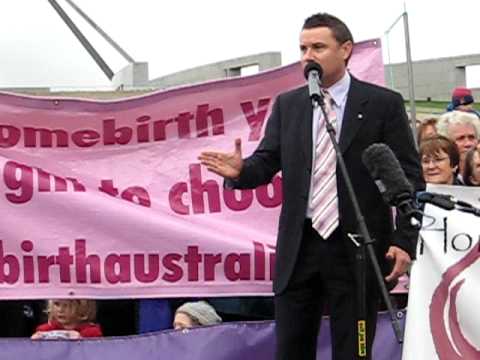
The upshot of the maternity services ‘reforms’ was that homebirth was going to be outlawed by default; literally as an accident of its irrelevance to those drafting the new regulations. Once this problem was, in Teackle’s words, “understood at the political level”, a solution was found.
Death By Regulation
This ‘solution’, which is still with us six years on, was a two-year legislated exemption for independent midwives from the requirement to have professional indemnity insurance for intrapartum care in the home (given that no such product existed and the government were unwilling to subsidise such a product). This exemption ensured homebirth midwives could still register with AHPRA and therefore legally practice, but continued to carry the burden of liability should something go wrong.
However, a condition of the exemption was a new and more stringent system of regulation for independent midwives. New guidelines, enforceable by the APRHA Nursing and Midwifery Board of Australia (NMBA), limited homebirth to “[w]omen with a singleton pregnancy, cephalic presentation, at term and free from any significant pre-existing medical or pregnancy complications…” ‘High risk’ women including (but not limited to) those pregnant with twins, breech babies, women wanting a vaginal birth after caesarean section (VBAC), and those over 41 weeks gestation were classified unsuitable for homebirth.
This effectively excluded a whole raft of actual and potential women from accessing a registered midwife (confident that she was operating within the guidelines). It also created an invidious position for midwives: support women who want a homebirth – and are likely to proceed with one anyway – or comply with the guidelines.
At this critical juncture home birth was “driven underground” in Australia because many independent midwives couldn’t continue their practice with the knowledge they were operating within the guidelines, or that they had the support of either their professional organisation or the Board. Likewise, women couldn’t access independent midwifery services confidant they could find support, for example, to birth twins at home.
Now this legislation and its regulatory aftermath is relevant in Gaye Demanuele’s case because she was politically opposed to these guidelines. It has been presented in the mainstream media that Gaye deregistered herself to avoid culpability and, indeed, to keep practicing against the law because apparently she is “dangerous” and hell bent on breaking the rules. In fact, Gaye’s deregistration was a protest against the new regulations and the increasing straight-jacket they placed on midwives and, by association, on women.
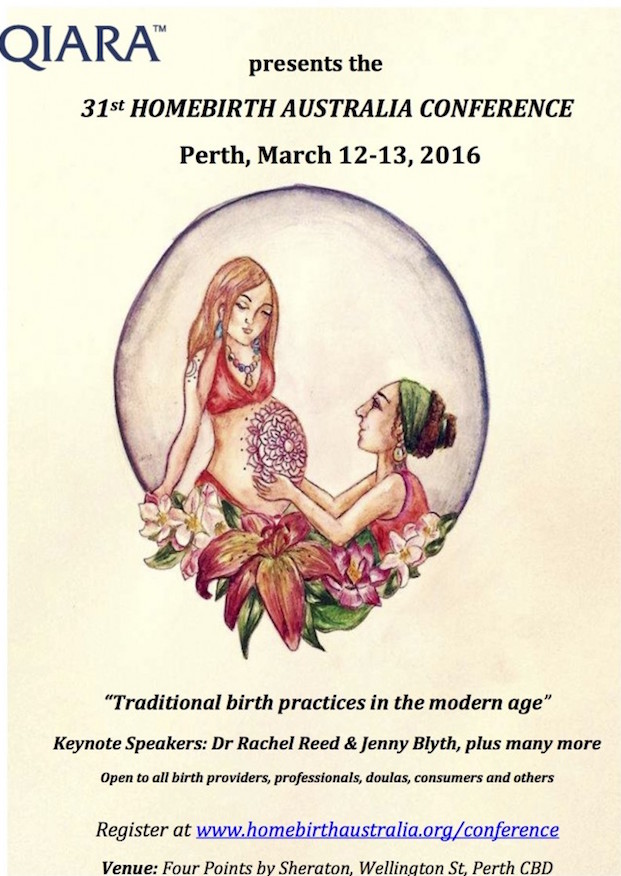
Her opposition was part of a large campaign by homebirth activists, academics, practitioners and consumers, to ensure that homebirth was not outlawed and, by association, that birth choices were not defined in advance by others, whether they be the state, insurers, doctors, obstetricians, or professional associations. Rather, such choices should be defined by the women.
This is consistent with a human rights approach to childbirth which foregrounds consent and, as with sexual politics, the critical focus is on the ability to say no. ‘Yes’, as we all know, is meaningless without the legally enforced capacity to say ‘no’. If women cannot say ‘no’ to obstetric interventions (up to and including giving birth in a hospital), then they do not, as the international organisation Human Rights in Childbirth (HRiC) state, have autonomy over their own bodies. This is what the global fight for birth rights is about: women’s capacity to determine their own bodies, to make their own choices, to truly give, decline, or withdraw consent. It also means giving teeth to the common law, which already grants women this right of self-determination.
The Fight For Homebirth
To understand the new legislation, we need to do some backtracking. In 2008 the Department of Health undertook a review of maternity services with a view to enacting national reform. An unprecedented number of submissions – indeed over 900, which constituted more than 60 per cent of the submissions – were from those describing the benefits of homebirth and seeking equity of access to (i.e. funding for) homebirth services and, as part of this, a workable solution for independent midwives regarding professional indemnity insurance.
It was, therefore, a perplexing and distressing outcome that the Report of the Maternity Services Review (2009) concluded with no support for homebirth – either in the form of subsidised insurance or Medicare rebates for independent midwives. That this was followed with the accidental outlawing of homebirth – the ‘unintended consequence’ of the new AHPRA registration requirements – was a slap in the face.
Subsequent senate inquiries – one into the maternity services review and the other examining collaborative arrangements – had 2000 submissions each from homebirth supporters. Again they fell on deaf ears.
In addition to the deluge of submissions, there was a protest at Parliament House in Canberra, ‘The Mother of All Rallies’, including many local and national groups in support of birth rights, home birth, and independent midwifery. This rally was in direct response to the threat that homebirth would become illegal with the new AHPRA registration requirements for midwives.
It drew over 2000 people in the pouring rain and again demonstrated the passionate support for homebirth in the community. It was two days prior to this rally – and arguably as a direct result of it – that Nicola Roxon introduced the exemption from insurance for independent midwives.
However, homebirth was left to flounder. As feminist birth rights activist and writer Janet Fraser said, it would be better if homebirth were illegal; at least then there would be something tangible to oppose. Instead activists are grappling with an Orwellian chimera of inclusion (in process) and exclusion (in outcome), with guidelines that are used to undermine birth choices under the pretence of expanding them.
 The outcome of the various bills, Acts, position statements, and their contestation, is that homebirth is now illegally legal. It sits in a quagmire of uncertainty. Sure, you can give birth at home within one of the small number of publically funded homebirth systems, which only accepts ‘low risk’ women, or with an ‘independent’ midwife, but then you’d need to live near the few midwives who offer such services and have sympathetic, supportive doctors collaborating with them. Independent midwives are themselves in a far more precarious position should they support a woman who starts with or develops risk factors; they face the prospect, like Gaye, of financial, career, and reputational ruin.
The outcome of the various bills, Acts, position statements, and their contestation, is that homebirth is now illegally legal. It sits in a quagmire of uncertainty. Sure, you can give birth at home within one of the small number of publically funded homebirth systems, which only accepts ‘low risk’ women, or with an ‘independent’ midwife, but then you’d need to live near the few midwives who offer such services and have sympathetic, supportive doctors collaborating with them. Independent midwives are themselves in a far more precarious position should they support a woman who starts with or develops risk factors; they face the prospect, like Gaye, of financial, career, and reputational ruin.
The Risks Of Reporting
Homebirth has foundered as a political issue. The momentum generated six or seven years ago has been lost after a brief resurgence in 2012 with the global screening of the film Freedom for Birth, which included a critical focus on the persecution of independent midwives telescoping in on the infamous case of Hungarian midwife Ágnes Geréb who was imprisoned for her work.
Homebirth has been undermined through the back door in Australia with the destruction of independent midwifery. Homebirth is no longer a viable option for most women given the lack of independent midwifery services and prohibitive costs, especially so in rural and regional areas. Independent midwives still lack indemnity insurance for birth care in the home, although the exemption was again renewed last year until December 2016. Lasting solutions have not been found.
Both the ACM homebirth position statement and the NMBA ‘safety and quality framework’ include “motherhood statements” (all puns intended) regarding women’s right to choose homebirth, even if it is medically contraindicated. In reality, as Gaye and many other midwives have found, to quote Michelle Mears, “[r]egistered midwives who support women with risk factors to give birth at home are frequently reported and this has created a climate of fear and persecution.”
Vexatious claims against midwives – including four of my six midwives – are commonplace. As Professor Hannah Dahlen said on the ABC’s Law Report in 2010:
“There have been very few cases of litigation against homebirth midwives. There have certainly been quite a few cases where midwives have been reported to regulatory authorities. Very, very rarely is that from the public or from someone who has been affected by midwifery care; the reports mainly come from health professionals who are perhaps disapproving of what midwives do.”
More recently Dahlen stated that, “about half of private-practice midwives have been reported to AHPRA by hospital staff as ‘unsafe’ because the birth did not follow strict health system requirements … Women have the legal right to birth how they want to … The midwives who support that right are being targeted.”
Independent midwives are accused of obstructing medical process, and of malpractice. In other words, midwives are in an awful catch 22. If they act on concerns to transition to hospital they risk being reported merely for showing up; if they don’t act they may risk the birthing mother’s life and their own professional standing. So, to transition to hospital is to face deep seated prejudices and hostilities – an antipathy that is both legitimated and fostered by the government’s refusal to underwrite an insurance product for independent midwives and by a corresponding system of regulation premised on risk rather than rights.
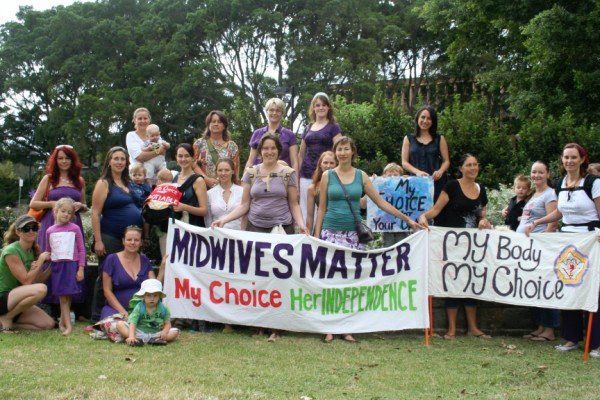
Independent midwives are a dying breed. Truly, who would want to put themselves in this line of fire? And yet, the irony here – given the emphasis on ‘safety’ – is that as the number of registered midwives has declined, the rate of homebirths has increased. Anecdotally, the number of independent midwives halved between 2009-2015 (although it is difficult to get an exact figure). In this same period free birthing – that is birth without an attendant – has increased substantially.
This means more women are birthing outside the system, without the care of a registered midwife, because the system does not provide for them. Ironically, then, homebirth has become less safe as a result of the ‘reforms’. And while I categorically support women’s right to freebirth, it is not okay if women are being pushed into this for lack of service options.
This problem is fundamentally about the paradigm war between a women’s rights perspective and a medicalised perspective on childbirth, and while these two need not be mutually exclusive, they often are. The one group – independent midwives – assume birth is a normal physiological process and support women’s bodily autonomy, up to and including their right to choose a birth that is deemed ‘high risk’, and adapt their clinical expertise around this; the second group – mainstream medical practitioners, namely obstetricians – assume birth is “only normal in retrospect” and want instead to adapt birthing women to the medical model of risk, health, and illness. The latter group, it has been repeatedly observed, see the first group as risky and cavalier by definition – hence the constant reporting.
The other key dimension here is the massive power difference between independent midwives and the medical and media establishments – evidenced most clearly in the fact that independent midwifery is disappearing against the will of the midwives themselves and the women who want homebirths. There is no level playing field between these two positions; no sense in which accused and maligned midwives like Gaye (and many, many others), are able to present their case with clarity and equanimity. They are a maligned group with no access to a voice that reflects their interests in the mainstream media or medical establishments; many have blogs but these are ignored or cherry picked to ‘prove’ their ‘extremism’.
If, as Marx said, ideology is the mechanism through which the powerless experience their reality systematically distorted – “upside-down as in a camera obscura” – then the representation of independent midwives, and homebirth more generally, is a perfect illustration of this. The ‘dangerous baby-killers’ are the very midwives advocating strongest for women’s rights! They are the midwives on the vanguard of social change and whose human rights perspective is the international standard, notwithstanding that they are often treated as an aberration.
Both groups want positive birth outcomes but there is a fundamental difference in orientation to women’s rights. The latter are not concerned about this issue – it is, quite simply, beyond the purview of the ‘evidence base’, which is concerned strictly with medical outcomes, specifically with perinatal infant mortality, which is higher in the case of homebirth with risk factors. This is why doctor’s groups and the state have colluded to oppose it, but they have done so at the formidable cost of abrogating women’s rights; quite simply it isn’t their choice to make.
Safety is not a one-way street conferred on women by obstetricians and their insurers, whose concern is, with few exceptions, always with a live baby and the financial bottom line, not the mother’s psychological wellbeing or subjective experience of birth. The emphasis on safety as risk prevention – rather than protecting the human rights of the mother and preserving her capacity to decide what happens to her body, which for most women is the very locus of safety! – omits what is most fundamental. What does ‘safety’ even mean if it has nothing to do with consent and how the birthing woman is treated or with how she feels? What is safety if a woman feels violated by unwelcome and actively rejected interventions? What is ‘safety’ if it involves obstetric violence?
Midwives like Gaye (once was) want to support all women who want a homebirth, perhaps especially those who have been identified by Dahlen as “refugees” of the system – that is women who have suffered obstetric violence, also known as ‘birth rape’ – in the mainstream medical system and want a homebirth both to heal that trauma and experience a normal birth. But it is also to support women like me who have no medical problems and who want a normal physiological birth with a known – and, often times loved – midwife in the intimate setting of the home. As research consensus shows this is about women’s only chance of a birth with few or no interventions.
The medicalised definition of ‘safety’, filtered through the insurer’s prism of economic risk, does not factor in the most important issue in childbirth: women’s subjective experience of bodily autonomy, and it is for this reason that human rights must always come before expert-led discourses of risk and safety. The latter are a precondition of informed consent, not its replacement.
In this country, we have physically and psychologically unsafe levels of intervention. As Dahlen said back in 2009, and things haven’t improved since, “intervention rates during childbirth have sky-rocketed over the past ten years in Australia, leaving women traumatised and fearful. A first time mother in Australia now has a greater chance of having a surgical intervention during her birth than not having it.” That is a sad indictment on our system and remains difficult to name because few in the mainstream medical or media establishments are interested.
Similarly, the death of mothers and babies in hospitals, including 18 infant deaths in the Bacchus Marsh maternity unit in only two years, rarely receive the kind of damning and sensationalist coverage assigned to homebirth deaths. As birth rights activist Janet Fraser asked in her speech at the second Mother of All rallies in 2015:
“Are we free when our caesarean rate has continued to increase, even since 2009, and the only models of care in which normal birth occurs are curtailed and becoming impossible to access? When women who still choose to birth at home are punished for stillbirth in a way which would never happen in hospitals? Are we free when women’s deaths in maternity hospitals go unnoticed and unremarked in the media? When statistics are not kept, or kept poorly, when states and territories cannot agree a definition of maternal death, much less a transparent and fearless approach to lowering the rates of women’s deaths? … Are we free when the few midwives who serve women, ahead of the state, are slowly picked off by unethical and immoral use of coronial processes?”
After Gaye Demanuele
In the wake of Gaye Demanuele’s case, new regulations are being discussed to “crack down” on independent midwives – a small, courageous and increasingly vilified group of women who believe that women have a right to make birth choices and that as midwives they are there to support those choices, not make them. Working as an unregistered midwife is now a criminal offence in South Australia and may become so in the rest of Australia. AHPRA is, in the wake of Caroline Lovell’s death, deciding on this matter now, specifically whether to extend this law nationally. Meanwhile, homebirth midwives are becoming rapidly extinct. The professional indemnity insurance exemption expires in December this year. One suspects this will be the time that homebirth is shut down once and for all.
While only a small group of women want homebirth, albeit within a system that fails to provide it as a viable option for most, to deny it affects all women in the same way that once only a small group of women wanted the vote but it affected all women that we were ‘not allowed’ to have it. When a minority are denied rights that are universal – in this case the right to bodily autonomy – it affects us all. Some may not like it that women with ‘risk factors’ want a homebirth, but it is not their choice to make. The loss of homebirth through the destruction of independent midwifery is a great loss to Australia maternity services.
As I said at the outset, this is the political context of Gaye Demanuele’s case. We would do well to consider this the next time we read a gratuitous headline calling her a “serial killer”. It is worth noting that Caroline Lovell was a strong believer in homebirth – she contributed a submission to the maternity services review stating that she would freebirth if there were no independent midwives left. She chose homebirth with Gaye. That this ended in her death is a tragedy for everybody, most especially her children and family.
Donate To New Matilda
New Matilda is a small, independent media outlet. We survive through reader contributions, and never losing a lawsuit. If you got something from this article, giving something back helps us to continue speaking truth to power. Every little bit counts.

